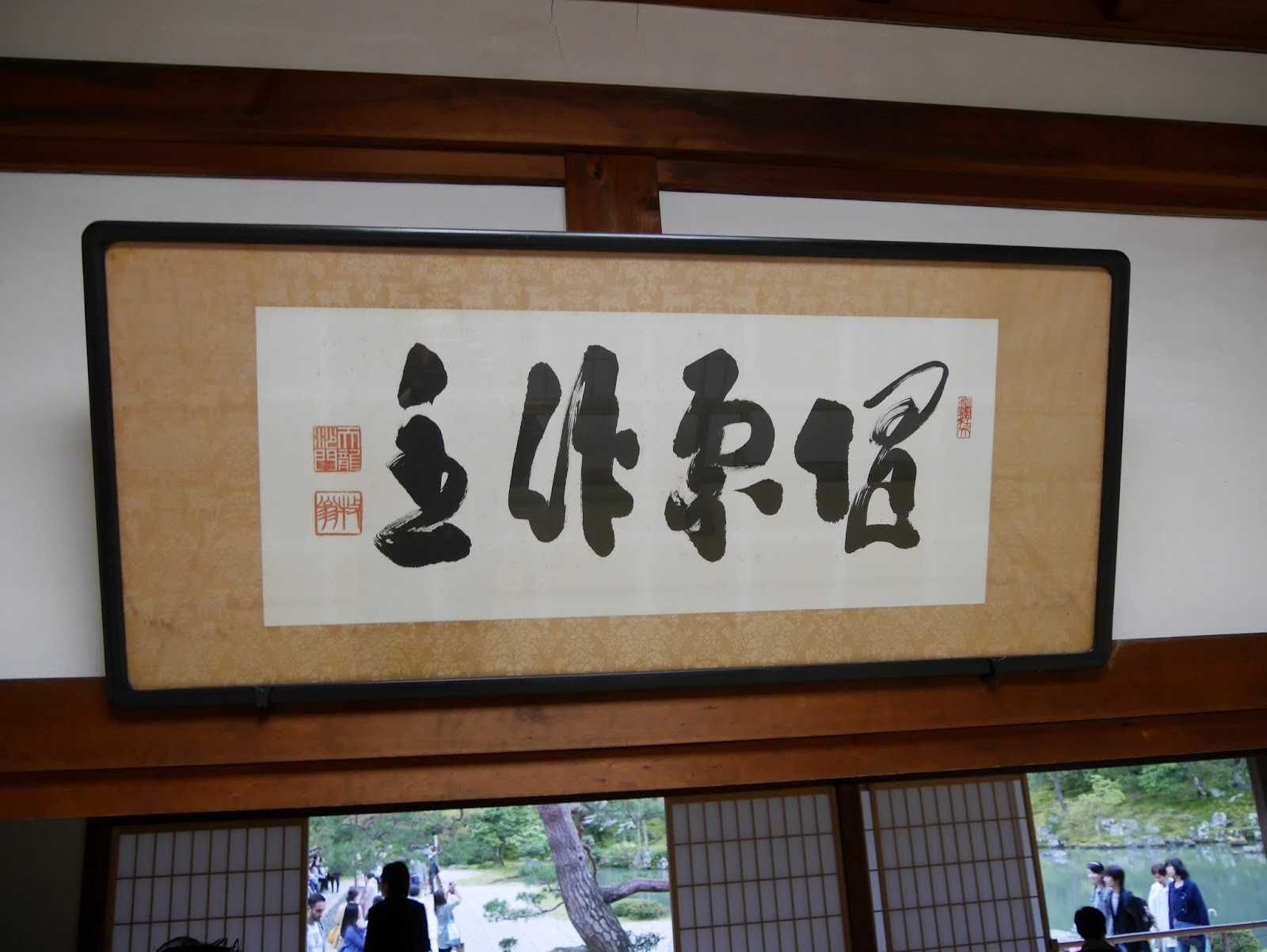We went to our last destination, Tenryu-ji Temple after Sagano Torokko Train.
 |
| Keihuku Electric Railroad Arashiyama Main Line |
 |
| Randen Sagano Station |
 |
| Entrance of Tenryu-ji |
 |
| Mt. Arashi |
 |
| Hiun Kannon, Kamikaze pilots during WWII prayed at here for their safety, the Kannon now is treated as a guardian of aviation safety. |
 |
| Hachiman-sha Shrine |
 |
| Visitor Entrance of Tenryu-ji, this building is named as Kuri |
Tenryu-ji is the head temple of Rinzai School Tenryu-ji Sect of Japan. After the death of Emperor Go-Daigo, Ashikaga Takauji, the first shogun of Muramachi Shogunate, built this temple to hold a memorial service for the late Emperor. Ashikaga Takauji invited Zen monk Muso Soseki to construct the temple at 1339. In order to raise fund for the construction, the Ashikaga shogunate accepted Muso Soseki's suggestion and sent "Tenryu-ji" merchant ship to having trade with Yuan Dynasty of China
The temple or Shichito-garan was completed in 1343. The sect that Muso Soseki led became prosperous and listed as the top of the Kyoto Gozan (the Five Kyoto Temples). Tenryuu-ji was destroyed by fire eight times since 1356, the current building is rebuilt in Meiji Era.
Visitors should take off their shoes before enter Kuri. At the middle of Kuri, there is a cartoon figure of Bodhidharma.
 |
| Ida-ten (Skanda) behind the figure of Bodhidharma. Ida-ten is one of the guardian of Buddhist teachings. |
 |
| Muso Soseki's footprint all over the land |
 |
| Ryugingosho (Roaring Dragon and Tiger) |
West of Kuri is Kohojo (the small abbey). Visitors could enjoy the astonishing view of Sogenchi garden from here.
 |
| Kohojo |
 |
| The building behind is Shoun-kaku. River flows in the garden. |
 |
| "Way to Sutra copying hall" |
 |
| "Abstain from killing in this river" |

After walked through a long corridor, we reached Taho-den. Taho-den is the hall where hold memorial service for Emperor Go-Daigo. The building is built in the style of noble residence in Medieval Period. It is believed that it is modeled on Shishin-den of Yoshino Residential Palace during the reign of Emperor Go-Daigo.
 |
| The statue at the middle is Emperor Go-Daigo |
 |
| Right side of interior of Taho-den |
 |
| Left side of interior of Taho-den |
 |
| The plaque seen on the way back to Kohojo |
 |
| The calligraphy in Kohojo, Mokumozo ("Don't dream vainly") |
 |
| Astonishing view outside Kohojo |
 |
| The screen in front of the lavatory |
 |
| Geta (wooden slipper) is provided in lavatory |
 |
| The screen beside Hojo |
Hojo, also called as Ohojo, is the largest architecture in Tenryu-ji. It was the residence of abbot. The current building is rebuilt in 1899. Although the temple was destroyed by fire eight times, but the Shakyamuni Buddha (Hujiwara Period) image enshrined on the altar is never destroyed and becomes the most ancient Buddha statue in Tenryu-ji.
 |
| Inner view from the north side of Hojo |
There is a folding screen art, called Unryu-zu (lit. "image of the cloud dragon") at the west side of Hojo. The original art was painted by Suzoki Shonen (Edo period) in 1763. In 1911, the art was removed from the folding screen and brought to Museum of Fine Arts, Boston by William Sturgis Bigelow, an American who was a Japanese art collector. The current art showed in Hojo is the replica by using high definition digital photography under the Tsuzuri Project led by the Kyoto Culture Association and Canon.
 |
| Hozo plaque, written by Rev. Seki Bokuo, the 8th abbot of Tenryu-ji |
 |
| Wooden fish (a kind of temple block) at the left side of Hozo |
 |
| Singing bowl at the right side of Hozo |
 |
| Inner side of Hozo, the memorial tablet enshrined in the middle is for the victims in Great East Japan Earthquake happened in 2011. |
 |
| Middle gate at the east side of Hozo |
After visiting Tenryu-ji, the next place to visit was the remarkable Sogenchi Graden.
Next:
A Poetic Zen Garden, Sogenchi Garden of Tenryu-ji











































No comments:
Post a Comment